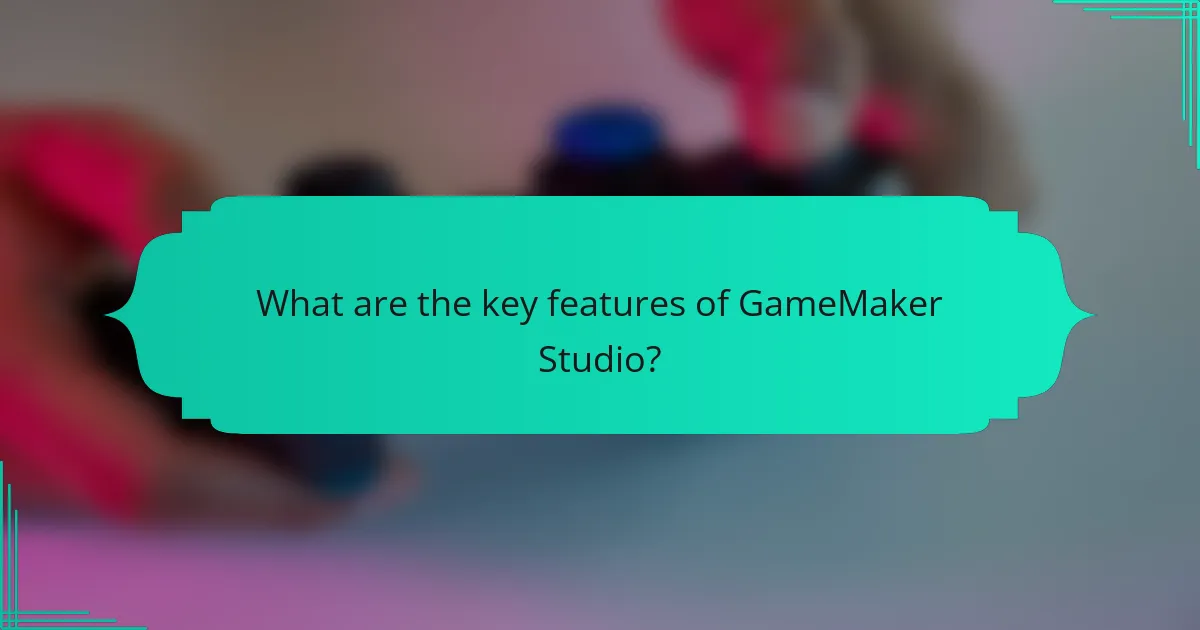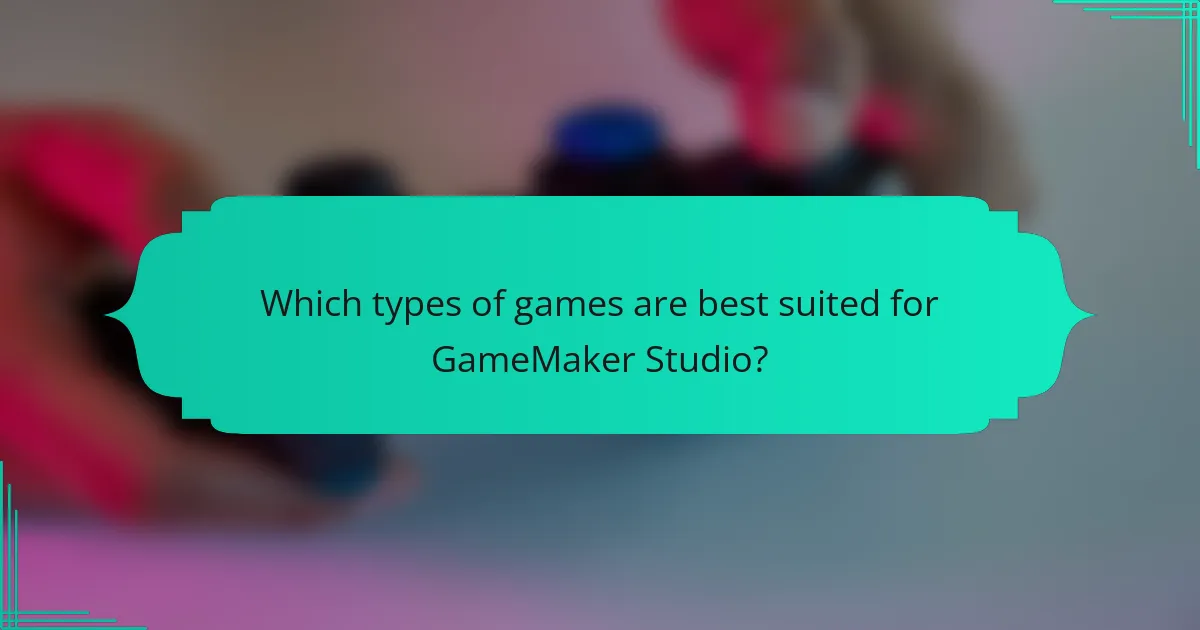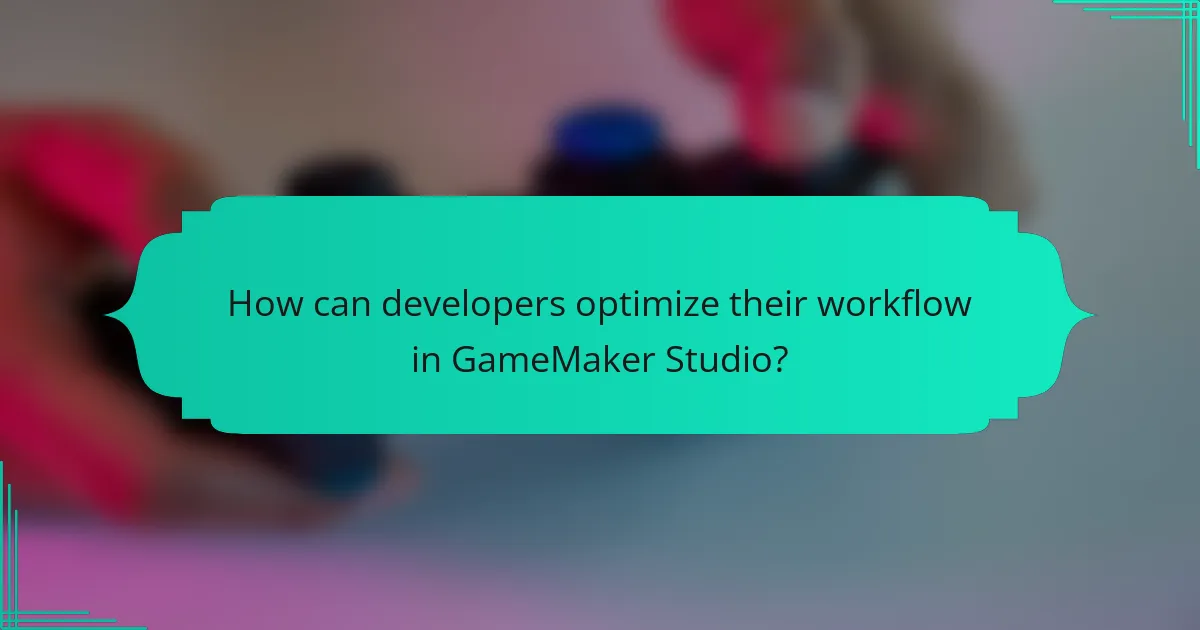Indie game developers often seek efficient tools to streamline their creative process. GameMaker Studio offers a user-friendly drag-and-drop interface, comprehensive scripting with GML, and cross-platform export capabilities. This article explores its key features, benefits for game creation, and practical tips for optimizing development workflows. Discover how to leverage GameMaker Studio to enhance your indie game projects.

What are the key features of GameMaker Studio?
GameMaker Studio offers a range of key features that enhance indie game development. It includes a user-friendly drag-and-drop interface, a comprehensive scripting language (GML), cross-platform export capabilities, and a robust asset library. These features streamline the game creation process and empower developers to bring their ideas to life efficiently.
Key features include:
– Drag-and-drop interface for intuitive design
– GML scripting for advanced functionality
– Cross-platform support for multiple devices
– Extensive asset library for quick integration
– Built-in debugging tools for efficient testing
– Community support and resources for learning and collaboration
How does the drag-and-drop interface enhance usability?
The drag-and-drop interface enhances usability by simplifying the game development process. It allows users to intuitively arrange game elements without needing extensive programming knowledge. This feature empowers indie developers to focus on creativity rather than technical barriers. Additionally, the visual nature of drag-and-drop enhances understanding and speeds up the workflow, making it easier to prototype and iterate on game designs.
Which programming languages are supported in GameMaker Studio?
GameMaker Studio primarily supports its own scripting language called GML (GameMaker Language). Additionally, it allows integration with JavaScript for web-based game development and supports C++ for advanced functionality. GML is designed to be beginner-friendly, while JavaScript and C++ offer more complex programming capabilities for experienced developers.
What tools are available for sprite and asset creation?
GameMaker Studio provides various tools for sprite and asset creation, including built-in image editors and sprite animation tools. These features enable developers to design graphics directly within the platform, facilitating a streamlined workflow. Additionally, GameMaker Studio supports importing assets from external software, enhancing flexibility in asset creation. The integration of these tools significantly benefits indie developers by simplifying the design process and reducing reliance on third-party applications.
How do built-in physics engines contribute to game development?
Built-in physics engines enhance game development by providing realistic simulations and interactions. They streamline the creation of complex movements, collisions, and environmental effects. GameMaker Studio’s physics engine allows developers to focus on gameplay mechanics rather than coding intricate physics calculations. This results in faster prototyping and a more engaging player experience. Additionally, the engine supports various attributes like gravity, friction, and restitution, making it versatile for different game genres.

What benefits does GameMaker Studio offer to indie developers?
GameMaker Studio provides indie developers with user-friendly tools, rapid prototyping, and cross-platform capabilities. These features streamline game development, allowing creators to focus on gameplay and creativity. The intuitive drag-and-drop interface reduces the learning curve, while built-in resources enhance productivity. Additionally, GameMaker Studio supports various platforms, maximizing audience reach.
Why is GameMaker Studio considered beginner-friendly?
GameMaker Studio is considered beginner-friendly due to its intuitive drag-and-drop interface and comprehensive tutorials. The platform allows users to create games without extensive programming knowledge, making it accessible for newcomers. Additionally, its active community provides support and resources, enhancing the learning experience. The built-in asset library simplifies game design, while customizable templates help users get started quickly. Overall, GameMaker Studio combines usability with powerful features, catering to aspiring game developers.
How does cross-platform publishing work in GameMaker Studio?
Cross-platform publishing in GameMaker Studio allows developers to create games for multiple platforms simultaneously. This feature streamlines the development process and expands the game’s reach across various devices. GameMaker Studio supports platforms like Windows, macOS, iOS, Android, and HTML5, enabling developers to publish their games quickly. The integrated export options simplify adapting games to different operating systems, ensuring compatibility and performance optimization. This capability enhances the indie game development experience by broadening the audience and increasing potential revenue streams.
What community resources are available for learning and support?
GameMaker Studio offers various community resources for learning and support. Key resources include official forums, tutorial websites, YouTube channels, and social media groups. These platforms provide access to tutorials, forums for troubleshooting, and opportunities for networking with other indie developers. Engaging with these resources can enhance skills and foster collaboration in game development.

What challenges might developers face using GameMaker Studio?
Developers using GameMaker Studio may face challenges such as limited 3D capabilities, performance issues with complex games, and a steep learning curve for advanced features. Additionally, debugging can be difficult, and the asset management system may not be as intuitive as other platforms. Compatibility with third-party tools can also pose obstacles, affecting workflow efficiency.
What are the limitations of the free version of GameMaker Studio?
The free version of GameMaker Studio has several limitations. Users cannot export projects to multiple platforms, limiting distribution. The free version also restricts access to advanced features, such as certain assets and integrations. Additionally, there are no options for removing the GameMaker splash screen, which can detract from a game’s professional appearance. These constraints can hinder indie developers looking for full functionality.
How can performance issues be addressed in games developed with GameMaker Studio?
Performance issues in games developed with GameMaker Studio can be addressed through optimization techniques. Focus on reducing sprite sizes, minimizing the use of heavy assets, and streamlining code. Implementing efficient data structures and avoiding unnecessary calculations can enhance performance. Regularly profiling the game helps identify bottlenecks and areas for improvement. Additionally, leveraging built-in functions and optimizing resource management can lead to smoother gameplay experiences.

Which types of games are best suited for GameMaker Studio?
GameMaker Studio is best suited for 2D games, platformers, and indie projects. Its user-friendly interface and versatile scripting language enable developers to create engaging experiences efficiently. GameMaker’s drag-and-drop functionality appeals to beginners, while advanced users can leverage GML for deeper customization. Notable successful games include “Undertale” and “Hyper Light Drifter,” showcasing its capability for unique indie titles.
How does GameMaker Studio cater to 2D vs. 3D game development?
GameMaker Studio primarily caters to 2D game development, offering tools that simplify sprite creation and animation. While it has limited support for 3D, developers can utilize extensions for basic 3D functionality. The platform’s strength lies in its intuitive interface and robust 2D features, making it ideal for indie developers focused on 2D projects. Unique attributes include a user-friendly drag-and-drop system and a powerful scripting language, GML, which enhances flexibility in game design.
What genres thrive on GameMaker Studio?
GameMaker Studio thrives in genres like platformers, puzzle games, and RPGs. Its user-friendly interface and robust scripting capabilities empower indie developers to create diverse game experiences. The flexibility of GameMaker Studio supports 2D graphics, making it ideal for retro-style games and innovative gameplay mechanics. Additionally, its extensive community resources enhance learning and collaboration among developers.

What unique attributes set GameMaker Studio apart from other game development platforms?
GameMaker Studio stands out due to its unique attributes like a user-friendly drag-and-drop interface, extensive asset library, and support for multiple platforms. These features enhance accessibility for indie developers. Additionally, its built-in scripting language, GML, allows for greater flexibility and control over game mechanics, setting it apart from competitors.
How does the asset marketplace enhance the development process?
The asset marketplace significantly streamlines the development process by providing ready-made resources. Developers can access a variety of assets, such as graphics, sound effects, and scripts, which saves time and reduces costs. This allows indie developers to focus on gameplay mechanics and storytelling rather than resource creation. Furthermore, the marketplace fosters collaboration, enabling developers to share and sell their creations, enhancing community engagement. Accessing diverse assets can also inspire creativity, leading to innovative game designs.
What notable indie games have been created with GameMaker Studio?
Notable indie games created with GameMaker Studio include “Undertale,” “Hyper Light Drifter,” and “Celeste.” These titles showcase the platform’s versatility and capabilities for unique game design. “Undertale” is renowned for its innovative storytelling and player choices. “Hyper Light Drifter” features stunning pixel art and engaging combat mechanics. “Celeste” combines challenging platforming with a heartfelt narrative, demonstrating the potential of GameMaker Studio in indie development.

How can developers optimize their workflow in GameMaker Studio?
Developers can optimize their workflow in GameMaker Studio by leveraging its built-in features and best practices. Utilizing the drag-and-drop interface speeds up development, while the integrated code editor enhances scripting efficiency. Version control systems streamline collaboration, and asset management tools keep projects organized. Regularly testing builds helps identify issues early, ensuring smoother gameplay experiences. Engaging with the GameMaker community provides valuable insights and resources for continuous improvement.
What best practices should developers follow for efficient game design?
Developers should prioritize user experience, optimize performance, and utilize GameMaker Studio’s features effectively for efficient game design. Focus on iterative testing and feedback to refine gameplay.
Key practices include:
1. Plan game mechanics early to ensure cohesion.
2. Use GameMaker’s built-in tools for rapid prototyping.
3. Optimize assets for performance to enhance loading times.
4. Implement user feedback loops for continuous improvement.
5. Document processes to streamline collaboration and future updates.
Which common mistakes should be avoided when using GameMaker Studio?
Avoiding common mistakes in GameMaker Studio is crucial for successful game development. Key errors include neglecting documentation, underestimating performance optimization, and failing to test across devices.
1. Ignoring the official documentation can lead to misunderstandings of features and capabilities.
2. Overlooking performance optimization may result in lag and poor user experience.
3. Not testing games on multiple devices can cause compatibility issues.
4. Underusing built-in resources, like sprites and sounds, can limit creativity.
5. Skipping version control can lead to lost progress and difficulties in collaboration.
What expert tips can enhance the game development experience with GameMaker Studio?
To enhance the game development experience with GameMaker Studio, focus on mastering its features and community resources. Utilize built-in tutorials for efficient learning. Leverage the asset library to save time on graphics and sound. Engage with the GameMaker community for feedback and support. Experiment with the drag-and-drop interface to prototype quickly. Optimize game performance by profiling and refining code regularly.
